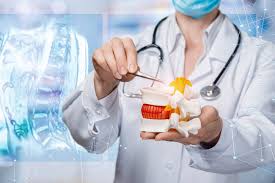Know more about the Neuromuscular Scoliosis
If your child is experiencing symptoms of neuromuscular scoliosis, it's important to know the basics of the condition. Here we'll look at treatment options, X-ray images, exercises, and the progression of the condition. Keep reading to learn more about this condition. And be sure to contact us if you have any questions! After all, we're always happy to help!
Treatment options Suggested by Top Scoliosis Surgeon In india
The most common treatment for neuromuscular scoliosises is surgery, though bracing can be an effective treatment option for children. While bracing can prevent spinal curvature during growth, it will not correct the curve. Treatment options for neuromuscular scoliosis vary depending on the degree of the curve and the underlying condition. Treatment options for children with neuromuscular scoliosis vary from one individual to another.
X-ray images
X-ray images of the spine are the most common means of diagnosing neuromuscular scoliosis. The best way to determine the severity of the curve is to take X-rays of the spine in a seated or standing position without any support. These images will allow for gravity to affect the curve of the spine and measure the degree of rotation. Neuromuscular scoliosis may be associated with other conditions, including spinal dysraphism, cerebral palsy, and spina bifida.
Exercises Suggested by Best Scoliosis Surgeon In india
A physiotherapist can design an exercise regimen for patients with scoliosis that targets their core muscles. The exercise plan should target the muscle strength and joint flexibility to improve a patient's functional ability. Physiotherapy and conservative treatment of scoliosis are not the same. Both methods require a careful assessment of the patient's symptoms and condition. But while both approaches have similarities, they differ significantly in their effectiveness.
Predicting progression
A recent study has developed a model to predict the progression of a neuromuscular scoliosis curve. This model takes into account skeletal maturity, Cobb angle, and three 3D spinal parameters available at the first visit. The model predicts the Cobb angle at full skeletal maturity by as much as 65%. Although the model is far from perfect, it can help physicians predict the progression of curves in neuromuscular scoliosis.
Surgery
Neuromuscular scoliosis is a multisystem disorder with variable incidence, inversely related to ambulatory capacity. Non-ambulatory patients have a risk of 80% to 100%. Its main symptom is long, collapsing spine and pelvic obliquity, which makes sitting balance difficult. Patients with neuromuscular scoliosis often present with comorbidities. Surgery to correct this condition requires a multidisciplinary team approach, with input from scoliosis surgeons, neurologists, general pediatricians, nutritionists, and other specialists.

Comments
Post a Comment